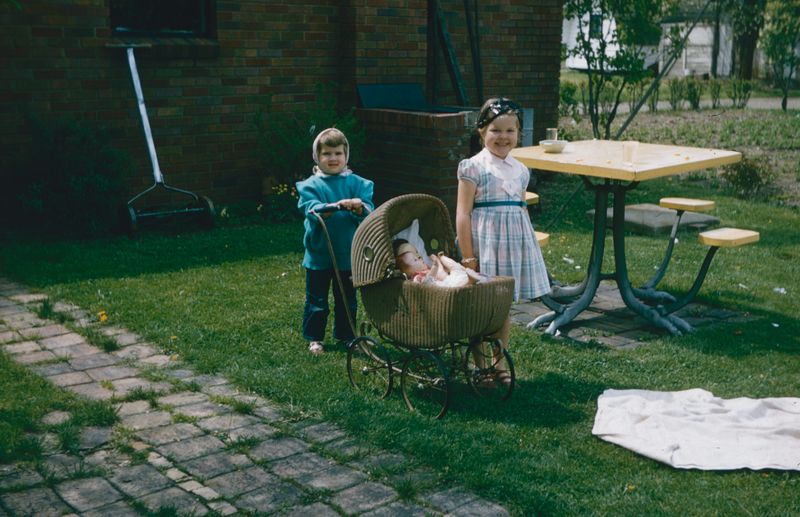Family Life in the ’70s vs. Today: 5 Things We Lost & 5 Things We Gained

Family life in the 1970s looked very different from the one most of us know today. Dinner around the table was practically mandatory, kids played outside until the streetlights came on, and work usually ended when the office doors closed at 5 p.m. Fast forward to now, and while we’ve made huge strides in equality, technology, and freedom, we’ve also lost some of the simplicity and connection that defined earlier generations.
1. Family Dinners Together

Evenings used to revolve around the kitchen table, where families shared stories about their day over a home-cooked meal. There wasn’t much debate—everyone was expected to be there, no excuses.
Today, with parents working longer hours, kids shuttling between sports and lessons, and takeout just a click away, the family dinner has become a rare occasion. Meals are often eaten on the go or in front of a screen.
While schedules may be fuller, what’s missing is the daily ritual of connection. Those dinners weren’t just about food; they were about bonding, laughter, and even the occasional argument that helped families grow closer.
2. Neighborhood Bonds

Back in the ’70s, your neighbors were practically an extension of your family. Kids roamed freely from yard to yard, and adults swapped recipes, borrowed sugar, or simply sat on porches chatting.
Fast forward to now, and many neighborhoods feel quieter and more private. Between busy lives and the lure of digital communities, we spend less time forming face-to-face connections with the people who live right next door.
The sense of belonging that came from knowing your neighbors gave families an extra layer of support. Today, while we can connect with people across the globe, local bonds aren’t as strong—and sometimes that makes our world feel smaller, not bigger.
3. Work-Life Separation

A job in the ’70s often meant you clocked out and didn’t think about work until the next morning. The office was where business happened, and home was reserved for family, rest, and maybe catching the evening news.
Now, smartphones, emails, and remote work have blurred that line beyond recognition. Many parents find themselves answering messages at the dinner table or sneaking in “just one more” Zoom meeting.
While flexibility is a perk, the loss of true downtime has made family life more fragmented. Instead of being fully present at home, parents juggle professional demands around the clock, often at the expense of family connection.
4. Children’s Independence

There was a time when kids could explore the neighborhood freely—playing kickball in the street or biking far from home without constant watch. Parents simply trusted they’d be back when the streetlights came on.
Today, “free-range” childhood feels almost unthinkable. Children are more likely to spend their afternoons in structured activities, sports practices, or glued to devices indoors. Parental concern about safety has drastically cut down on unsupervised play.
The result is a generation of kids with fewer chances to solve problems, negotiate with peers, or explore on their own. Independence has taken a backseat to control, and some of life’s best lessons are being missed.
5. Proximity to Extended Family

Living close to grandparents, aunts, and uncles used to be the norm. Families often stayed in the same town for generations, creating a built-in support system of babysitters, mentors, and holiday hosts.
Now, career moves, education, and the desire for new opportunities scatter families across the country—or even the world. Visits are saved for holidays, and FaceTime has replaced frequent drop-ins.
While this independence allows families to build their own lives, the everyday presence of extended relatives has faded. Kids miss out on daily interactions with grandparents, and parents lose that extra layer of help that made raising a family a little easier. Let’s now take a look at the bright side and talk about all the good things we have gained in the last 50 years of shifting the work-life balance.
6. Gender Equality at Home

The traditional “man works, woman cooks” model that dominated the ’70s has given way to more balanced households. Today, women often contribute as much financially as men, while men are more hands-on with childcare and chores.
This shift has created more partnership in marriage, where roles aren’t defined by outdated expectations but by what works best for the family. Shared parenting is now celebrated rather than questioned.
Of course, balancing two careers and family responsibilities can create stress, but the progress toward equality has opened the door for healthier, more respectful relationships between partners—and for kids to see that fairness at home is normal.
7. Greater Safety Awareness

Back in the ’70s, seatbelts were optional, helmets for biking were rare, and kids routinely rode in pickup truck beds. Though parents loved their kids, safety standards weren’t as strict as they are today.
Today, everything from car seats to online monitoring tools reflects how cautious modern parenting has become. While sometimes criticized as “overprotective,” these measures have undeniably kept kids safer.
The trade-off is a world where children have less freedom, but families can rest easier knowing risks are lower. This cultural shift shows just how much more emphasis we place on protecting kids, even if it means hovering a little closer than our parents did.
8. Technological Convenience

Few families in the ’70s imagined a world where you could video chat a relative across the globe, order groceries from your couch, or watch any movie on demand. Life was simpler, but also slower.
Technology has transformed how families function. Parents can coordinate busy schedules with shared calendars, kids can access endless learning tools, and entertainment is only a click away.
Of course, the downside is that screens often distract from real-life connection. But there’s no denying that convenience, information, and entertainment are more accessible than ever, making modern family life easier in countless ways.
9. Flexibility in Work and Life

Punching a clock and sticking to rigid schedules defined work in the ’70s. For most families, that meant limited freedom to adjust hours around kids or personal needs.
Today, remote work, flexible hours, and even side hustles give families more control over how they structure their lives. Parents can attend school events without skipping work or build careers that fit around family demands.
The challenge, of course, is learning to disconnect and avoid burnout. But for many families, this flexibility has been a gift—allowing them to redefine what balance looks like in a way the ’70s never offered.
10. Freedom in Relationships

Divorce in the ’70s carried a heavy stigma, and many people stayed in unhappy marriages simply because it was expected. Traditional family structures were the default, with little room for alternatives.
Modern families come in all shapes and sizes. People feel freer to leave relationships that don’t work, remarry, or create blended families. Same-sex marriages and nontraditional partnerships are also more widely accepted.
This freedom means families can be built around love and choice rather than obligation. While stability may look different than it did decades ago, the ability to define relationships on our own terms is one of the most empowering changes since the ’70s.

Comments
Loading…